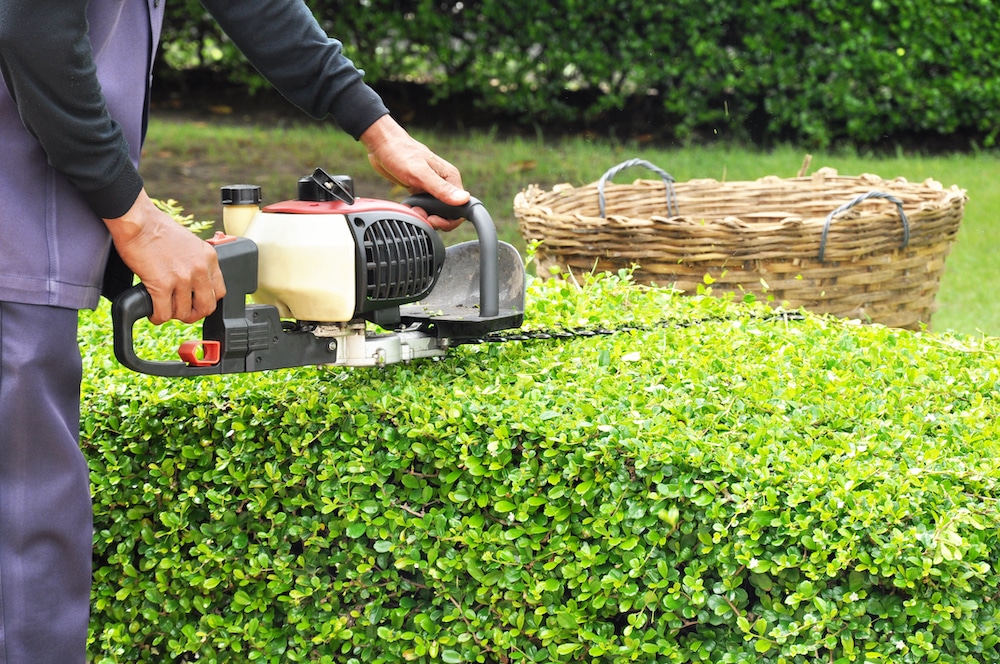Hedge Trimming Safety

Hedge trimming is an essential part of landscape maintenance, but it's not without its risks. To protect both yourself and your landscape, it's crucial to prioritize safety when working with hedge trimmers. In this article, we'll delve into hedge trimming safety tips and guidelines to ensure a secure and successful landscaping experience.
1. Wear Appropriate Safety Gear Before you even start trimming your hedges, ensure you're properly equipped with the following safety gear:
Safety Glasses: Protect your eyes from debris and flying clippings by wearing impact-resistant safety glasses. Ear Protection: Hedge trimmers can be noisy, so consider wearing earplugs or earmuffs to safeguard your hearing. Gloves: Wear sturdy, non-slip gloves to maintain a firm grip on the trimmer and protect your hands from scratches and blisters. Long Sleeves and Pants: Cover your arms and legs to shield them from scratches and irritation caused by branches and leaves. Closed-Toe Shoes: Choose comfortable, closed-toe shoes with good traction to prevent slipping and protect your feet.
2. Choose the Right Hedge Trimmer Selecting the appropriate hedge trimmer for your needs is critical. Factors to consider include:
Type: Choose between manual, electric, cordless, or gas-powered hedge trimmers based on your landscape's size and your preferences. Blade Length: Opt for a blade length suitable for the height and density of your hedges. Longer blades are better for tall hedges, while shorter ones are more maneuverable for precise shaping. Weight and Balance: Ensure the trimmer is comfortable to hold and not too heavy, as extended use can lead to fatigue and decreased control.
3. Inspect Your Trimmer Before each use, inspect your hedge trimmer for any signs of damage or wear. Make sure all safety features are in working order. Never operate a damaged or malfunctioning trimmer.
4. Keep Your Workspace Clear Clear the area around your hedges of any debris, toys, or obstacles that might impede your movement or pose a tripping hazard. Also, remove any foreign objects or branches that might become projectiles when cut.
5. Maintain Safe Working Posture Maintain a balanced and stable posture while operating the hedge trimmer:
Stand Firm: Plant your feet shoulder-width apart to ensure stability. Two-Handed Grip: Always use both hands to grip the trimmer handles for better control. Watch Your Balance: Be cautious when reaching overhead or to the sides to avoid overextending and losing your balance.
6. Work in Well-Lit Conditions Trim hedges during daylight hours or use adequate lighting if you need to work in low-light conditions. Good visibility is essential for precision and safety.
7. Mind the Power Source If you're using an electric trimmer, be mindful of the power cord. Keep it behind you and away from the cutting area to avoid accidentally cutting it.
8. Use Caution on Ladders If your hedges are tall, consider using a stable ladder with a spotter to assist you. Make sure the ladder is on level ground and follow ladder safety guidelines.
9. Never Remove Safety Guards Safety guards are designed to protect you from the moving blades. Never remove or disable them, no matter how inconvenient they may seem.
10. Take Breaks and Stay Hydrated Trimming hedges can be physically demanding work, so remember to take regular breaks to rest and hydrate. Dehydration and fatigue can compromise your safety.
Conclusion - Hedge trimming can be a rewarding part of maintaining your landscape, but safety should always be your top priority. By following these safety tips and guidelines, you can protect yourself and your landscape, ensuring that your hedge trimming tasks are not only successful but also secure and injury-free. Prioritize safety, and you'll enjoy a beautifully manicured landscape without incident.